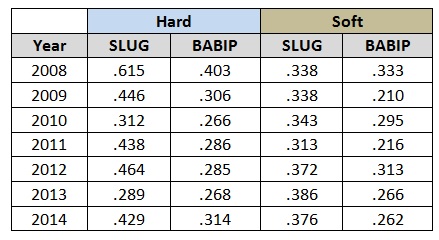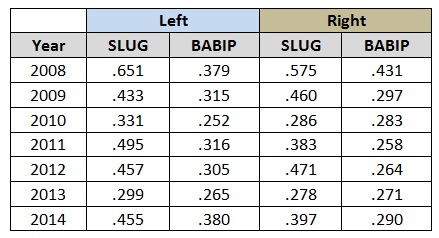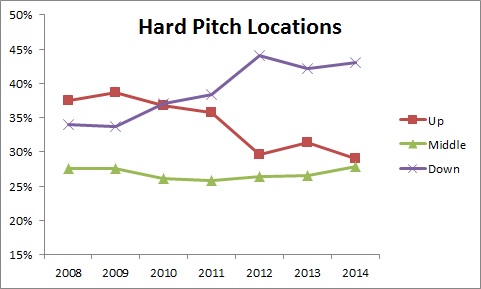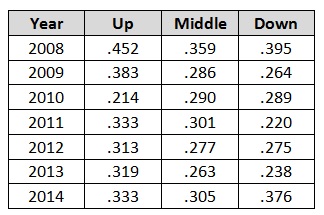What to Make of Clay Buchholz for 2015
Clay Buchholz is probably the hardest pitcher to project (I also waited until the end to write this write-up) because his performances in the past have been so widely inconsistent. To borrow a line from Jason Mastrodonato, “Baseball-reference.com creates comparable player lists based on the numbers, and the players Buchholz is compared to – Rich Harden, Shaun Marcum, Ricky Nolasco, Ian Kennedy and Wade Miller, among others – are perhaps equally talented as they are sporadic.”
So before going down the rabbit hole let’s take a look at his baseline numbers first. From 2008-13 he has a 3.66 ERA. 1.30 WHIP, 17.9% strikeout rate and 9.1% walk rate. Last year he was really bad; last year’s ERA was the highest it’s been since his rookie year in 2008. When asked about his poor numbers not even Buchholz himself was able to identify why.
He was incredibly unlucky last year as his BABIP and strand rate were much than his career norms. It’s easy to say both numbers will positively regress, but there’s a reason why last year’s BABIP was 30 points higher than his career average and the strand rate was nearly ten percentage points lower than his career average.
Let’s take a look at the performance of his pitches (table below). I categorized his pitch types into two categories: Hard and Soft. Hard consists of the fastball, sinker and cutter and Soft consists of the curveball, splitter and changeup.
The biggest reason why his BABIP was so high was due to the Hard pitches. Even though the Hard pitches had a high BABIP he didn’t allow a lot of hard contact as evidenced by normal slugging percentage. Let’s take a deeper dive and look at his performance against left-handed and right-handed hitters.
The table below shows his performance throwing Hard pitches against left-handed and right-handed batters.
He had huge spike in BABIP against lefties last year, but like the previous table lefties didn’t make a lot of hard contact against him. He also saw an uptick in BABIP against righties too so maybe it was bad pitch location that caused the high BABIP?
The image below shows the percentage of pitches by pitch location for Hard pitches. The three locations are Up, Down or Middle.
Last year he continued to throw Hard pitches down in the zone so it’s counter-intuitive because keeping the ball down in the zone is one of the most effective ways to be successful. If he kept the ball down then why was his BABIP so high? The table below shows the BABIP of Hard pitches thrown in various locations. Those locations are classified as Up, Middle and Down.
He’s thrown Hard pitches down in the zone at the same clip for the past three seasons, but his BABIP shot up immensely which indicates he was extremely unlucky last year.
Some fantasy owners may say the reason for his poor performance was a decrease in fastball velocity, but his velocity was barely less than 2013 and only one mph less than the 2011 season.
In late September he had surgery to repair a torn meniscus in his right knee, which could have been a factor to his poor performance because it was the same knee that put him on the DL in May. However, when asked Buchholz insisted he was fully healthy.
After looking at all this data I conclude he got unlucky with the BABIP and if he continues to throw Hard pitches down in the zone he should be very successful next season. The big question is how successful?
Last year he posted the lowest walk rate of his career while continuing to throw Hard pitches down in the strike zone. If he’s able to continue both trends and the BABIP positively regresses he could have an ERA in the 3.40-3.50 range with a sub 1.29 WHIP. Injuries are always going to be a concern for Buchholz (he’s never pitched more than 190 innings in a regular season), but he has tremendous upside. The infield defense should be very good and he’ll likely be pitching with a lot of runs on the board. His ADP will likely be suppressed so fantasy owners will likely be able to draft him at a substantial discount. I’m going to take a chance on him and so should you.







